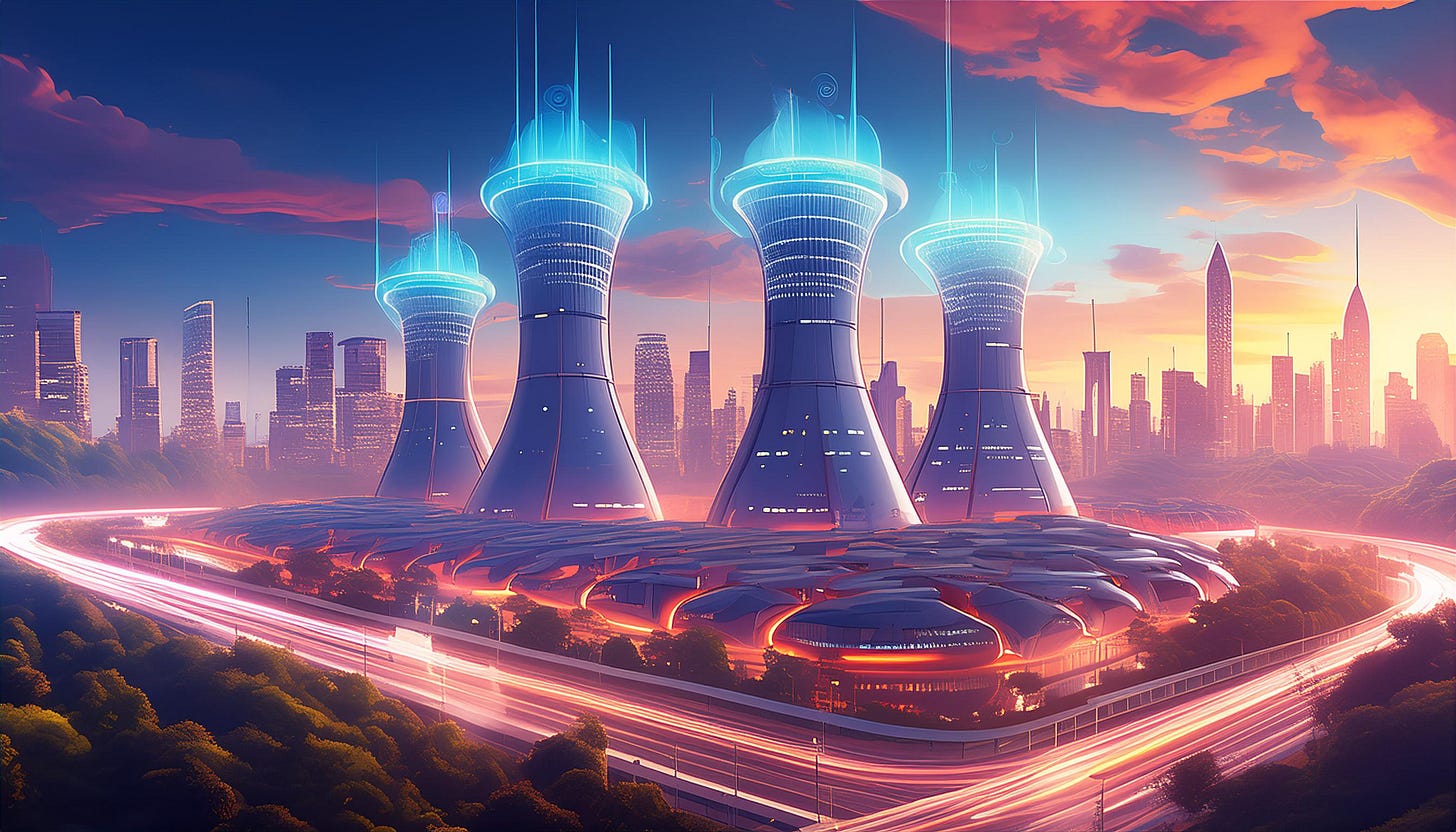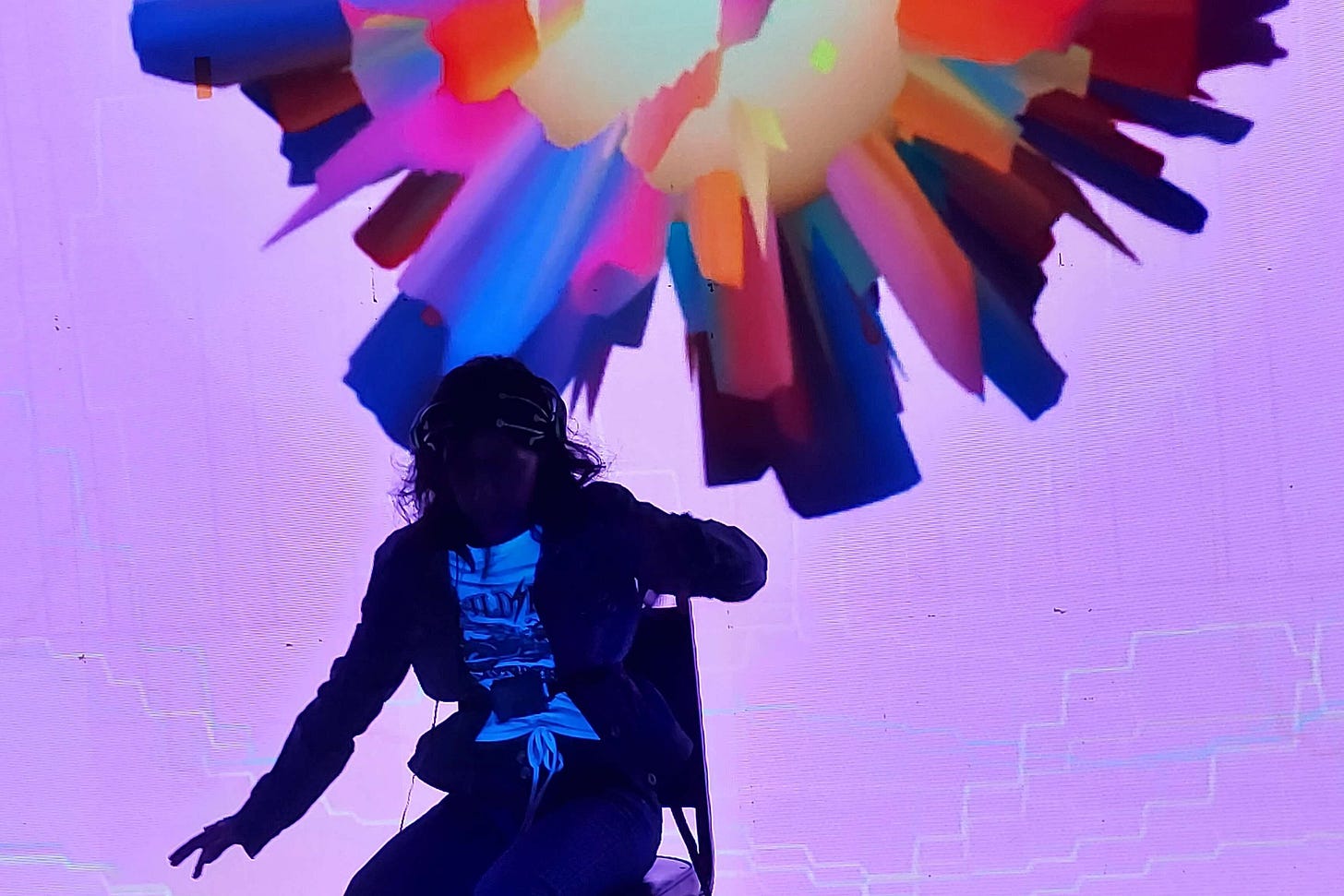Nuclear Power Renaissance, RAGing with the Machines, and Roundup #33
While atoms get a second chance, AI gets more factual, and dating gets a new copilot, we explore the benefits of green bananas, the promise of on-demand sleep, and the prospect of warp drive.

For this 33rd edition of The New New, we have two big things to explore: the nuclear power renaissance and the much-needed rise of RAG in AI.
Then we roll through the roundup and into two additional hot takes (one on merch, the other on AI dating copilots).
And I could not fit this randomness in anywhere else, so here’s a leading tidbit for you:
I learned that ai.com redirects to Google Gemini. Since I’m Of A Certain Generation, anything that is a short dotCom creates nostalgic intrigue, envy, and shareability.
Okay, without further ado, let’s dig in.
Two Big Things
Nuclear Power Renaissance
Our AI-infused, data-hungry, power-intensive future requires a return to the past and a push into an illusive future.
The world is entering a post-growth era, but our demand for energy is growing exponentially.
The rise of Artificial Intelligence has data centers overwhelming power grids, threatening global electricity supplies, and creating future capacity planning challenges.
The race for clean, sustainable energy has taken an intriguing turn – a potential nuclear power renaissance.
This resurgence has two fronts.
First, old, shuttered plants are reopening. Secondly, brand-new nuclear plants are under construction.
But, the future will need even more innovation.
Concepts like small “backyard nuclear reactors” are being explored. The dream of fusion power, the very reaction that powers the Sun and makes life possible, is inching closer to reality.
However, hurdles remain.
Developing safe and efficient backyard reactors is a complex task. Engineering machines that can withstand the incredible stresses of recreating the conditions in the heart of a star is no small feat. Additionally, concerns exist regarding the potential for swift weaponization of fusion technology.
Despite the hurdles, nuclear energy is (once again) offering a path toward solving our needs for exponential power consumption and sustainable generation.
RAGing Against AI Hallucinations
Can this tech make AI more trustworthy?
AI’s tendency to create fabricated information remains a major hurdle (and risk) against its continued adoption.
This is where Retrieval-Augmented Generation (RAG) comes in. This new technology has the potential to revolutionize how AI interacts with the world.
RAG works by allowing AI models to access and integrate real-world data during the generation process.
Traditionally, AI relies solely on the information it’s trained on, which can lead to biases and factual inconsistencies. RAG, however, empowers AI to “fact-check” itself in real time, pulling from external sources like news articles, research papers, and even corporate databases (with permission) to ensure its responses are grounded in truth.
This integration of real-world data has exciting implications across various fields. A recent Stanford University study exploring AI legal assistants equipped with RAG capabilities demonstrated a significant reduction in factual errors compared to traditional large language models (LLMs).
Similarly, an article by AdExchanger explores the potential for RAG to leverage first-party data, highlighting its ability to personalize experiences and improve campaign performance in marketing.
RAG holds immense promise, but researchers acknowledge it’s a work in progress.
Several studies highlight the need for further development to address potential limitations in RAG technology. Additionally, the quality and reliability of external data sources integrated into RAG systems remain a critical focus.
The evolution of RAG highlights a broader trend in AI development: the increasing importance of incorporating human oversight and real-world data.
As AI continues to permeate our lives, ensuring its accuracy and reliability is paramount.
The Roundup
AI Infusions
AI-generated Streaming Platform,
where users will watch series and create their own content — complete with the ability to control dialogue, characters, and shot types
IntelliPhones,
the next generation of mobile phones, filled with AI-centric enhancements
Super Humans
Green Bananas,
if you eat them, you’ll get the same key nutrients as oats, peas, lentils, and potatoes
Intuitive Eating,
An “anti-diet” based on the idea that your body already knows exactly what it needs
Alcohol Neutralizing Gel,
making booze essentially harmless before it enters the bloodstream
Regrown Teeth,
the world’s first human trial has begun—paving the way for this medicine to be available as early as 2030
Neurotech Wellness Headband,
puts you to sleep on demand
Material Innovations
Night Vision Glasses,
replacing heavy, cumbersome goggles with simple glasses that convert infrared light into visible light
Polymer-based Micro-photonic Multi-functional Metamaterial (PMMM),
more transparent than regular glass while adding privacy, cooling the room inside, and automatically cleaning itself
By Land, Sea, and… Space
Kit-powered Micro-Cargo Ships,
transforming water travel by harnessing powerful and steady offshore winds
Diverging Diamond Interchanges,
when driving on the wrong side of the road is the right way to speed up traffic
Warp Drives,
new study shows they might not be relegated to science fiction
Two Takes
When pulling together this issue’s roundup, these two things got me thinking a bit more than the others. So, here’s a mini-spotlight on them.
Is Merch Dead?
Branded merchandise, once a hot commodity signifying fandom or cultural connection, is losing its appeal. This could be due to several factors, including a saturated market with merch options, designs lacking originality, and a shift in consumer preferences.
My take: It’s not dead, just cyclical.
Merch’s current slump mirrors its rise and fall in popularity in the early and late 1990s. Give it five years, and we’ll all be back to coveting tokens of our fandoms.
Your AI Dates My AI
Bumble founder Whitney Wolfe Herd envisions a future where love takes a technological turn. Her idea: AI concierges that manage your dating life and handle the legwork of finding love.
My take: It’s inevitable.
Just like AI is bringing us work assistants, virtual companions, and ghostbots (ways to connect with our deceased loved ones), this less “vision” and more “destination” for anyone who will be dating in the future.
Fake Moons.
Fake Cameras.
Fake Influencers.
For this throwback, let’s resurface Issue 25 from June 2023.
It brought us a bit of science. A touch of tech. A splash of AI. A douse of culture. And a few deep dives into big topics:
Joyful Horror
Lensless Photography
The Rise of “Fake” Influencers
The “Joyconomy”
It all still feels fresh, so head back to Issue 25 for all of that—and a fake moon.
The New New’s mission is to fuel foresight. Every issue delivers a curated view into the discoveries, launches, trends, and movements shaping tomorrow—all explored through broad landscapes, from labs and studios to businesses and culture.
Each month(ish), this is pulled together by me, Brent Turner, and published on LinkedIn, Substack, and my site.
Okay, I’m off to explain to my wife that I need to dig a hole for our future backyard nuclear power plant.
- B
⌘





